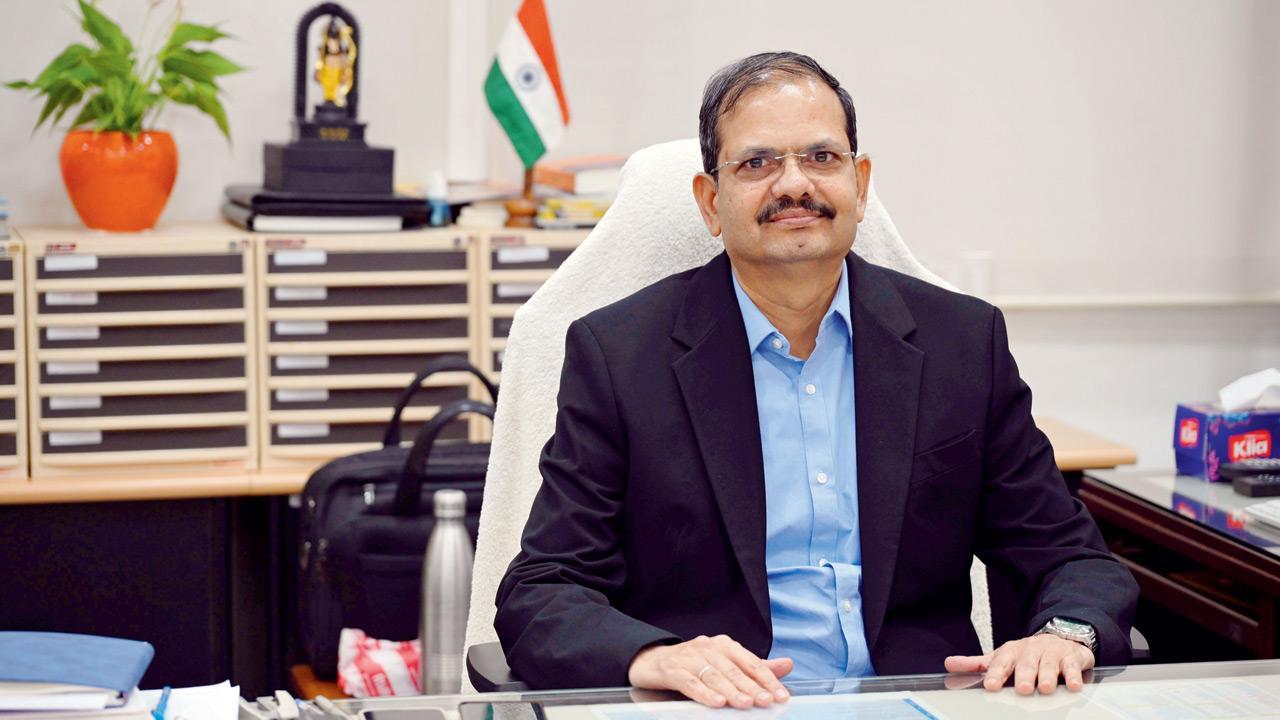Other key projects in the MUTP-3B are Asangaon-Kasara and Badlapur-Karjat lines; MUTP-4 is at conception stage

Mumbai Railway Vikas Corporation Chairman and Managing Director Vilas Sopan Wadekar. Pic/Anurag Ahire
The much-required planning for the Mumbai suburban railway has finally started with a focus on corridors for the ‘Third Mumbai’ through the Mumbai Urban Transport Project Phase (MUTP)-4, complete segregation of the suburban network by taking up balance sections viz the Panvel-Vasai corridor, the Badlapur-Karjat, and the Asangaon-Kasara through MUTP-3B.
ADVERTISEMENT
Chairman and Managing Director of Mumbai Railway Vikas Corporation (MRVC) Vilas Sopan Wadekar speaks to mid-day about the various planning strategies, AC EMU, and numerous projects.
Excerpts from the interview
Are we lined up for new mega projects, taking the MUTP ahead?
Yes. We have initiated the process to sanction MUTP-3B, the highlight of which is a new suburban corridor to connect the harbour line with WR and the segregation of mail express and local trains. The MUTP-3B project has a new local train corridor from Panvel to Vasai. The alignment of this corridor will be along the existing Panvel-Vasai corridor with multiple rail flyovers to intersect the existing rail traffic, including one at Kalamboli, over the Dedicated Freight Corridor (DFC) alignment and crossing over the WR while landing at Vasai.
What else is included in the MUTP-3B?
The other key projects included in the MUTP-3B are the Asangaon-Kasara and Badlapur-Karjat lines. Given the existing MUTP projects and their works, these new projects will ensure the complete segregation of suburban from non-suburban corridors.
What about the future plans?
The MUTP-4 is at a conception stage. We have initiated the process of taking up the Traffic Apprentice (TA) study. This will look at identifying suburban railway corridors, which is the need of the hour. The ‘Third Mumbai,’ areas of Navi Mumbai airport, and the Navi Mumbai Airport Influence Notified Area (NAINA) are some of the unexplored areas where local trains can ply. New corridors that can sync with the upcoming Metro network and all such areas.
Besides new corridors, what else will MUTP-4 look at?
We are looking at including the upgraded state-of-the-art version of cab signalling Communication-Based Train Control (CBTC)—Kavach 5—that can be used for local trains. It will positively bring down the headway of local trains and help to increase frequency. By this time, segregation of corridors too would be in place significantly. Besides, it would identify required work for ‘Mission Zero Deaths’ on track, a comfortable travel experience for commuters by bringing crowding levels to 300 people per coach from 500. Flooding of Mumbai railway is an age-old problem, and we intend to address it by studying the Japanese technology of underground holding ponds that can hold millions of megalitres of water during high-tide conditions so that tracks do not remain flooded.
Will there be any boost to the existing projects underway under MUTP?
We are looking at completing Karjat-Panvel on a priority basis and also taking ahead the ongoing Virar-Dahanu quadrupling. The work is on at a good pace without hindrance. In the next three to four years, all line projects under MUTP-3 & 3A will be completed.
What is the status of the AC local train project?
The Railway Ministry is positive about the project, and soon work shall begin as we get approvals. We are looking at a manufacturing-cum-maintenance model for these trains, which shall fulfill the requirement of rakes for network expansion in progress under MUTP-3 & 3A and partially replace the older Siemens’ rakes to be phased out between 2032 and 2037. There will be a 40:60 ratio of AC and non-AC rakes in the fleet, as it is important to clear the misconception that the entire fleet will be AC.
 Subscribe today by clicking the link and stay updated with the latest news!" Click here!
Subscribe today by clicking the link and stay updated with the latest news!" Click here!







